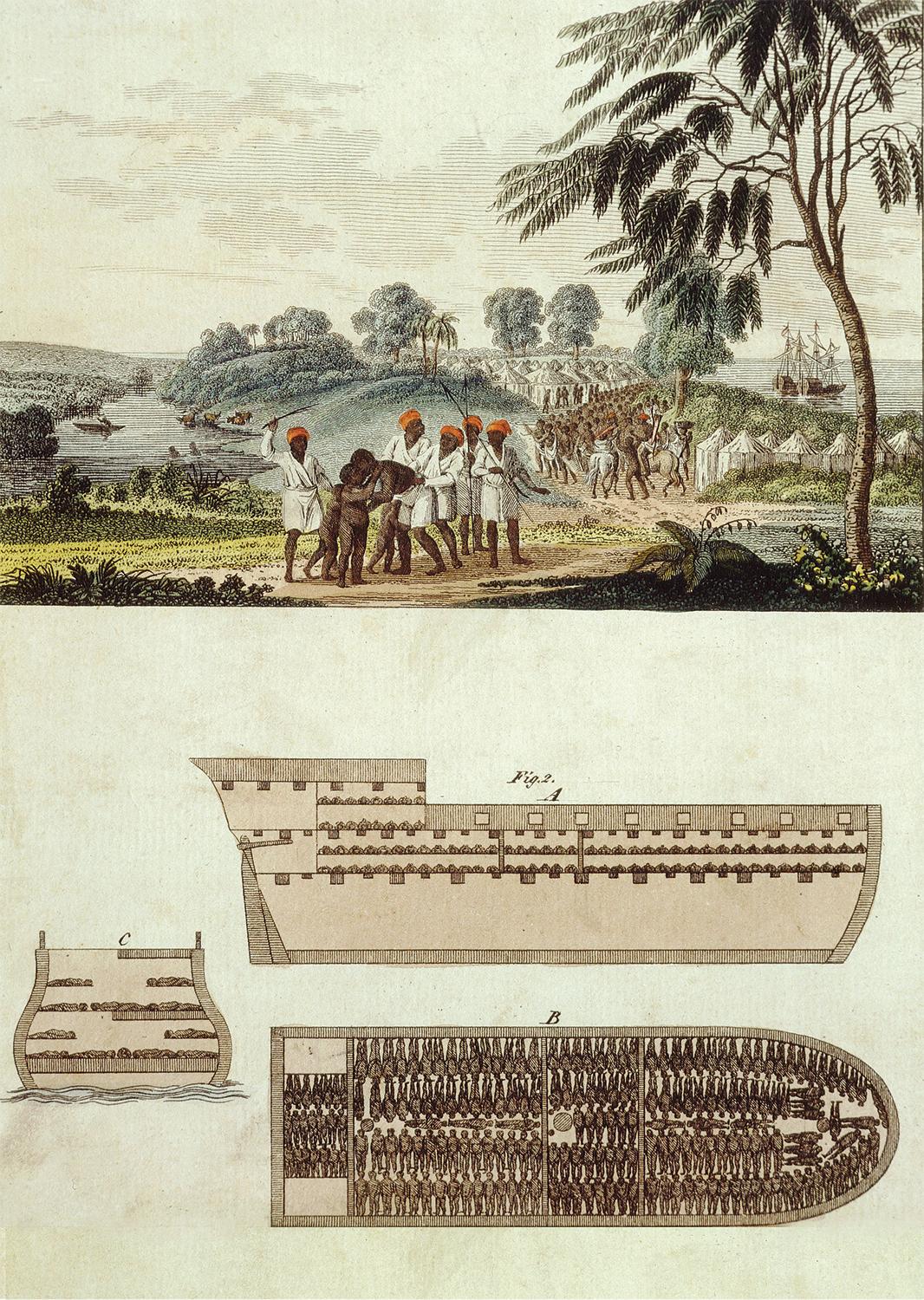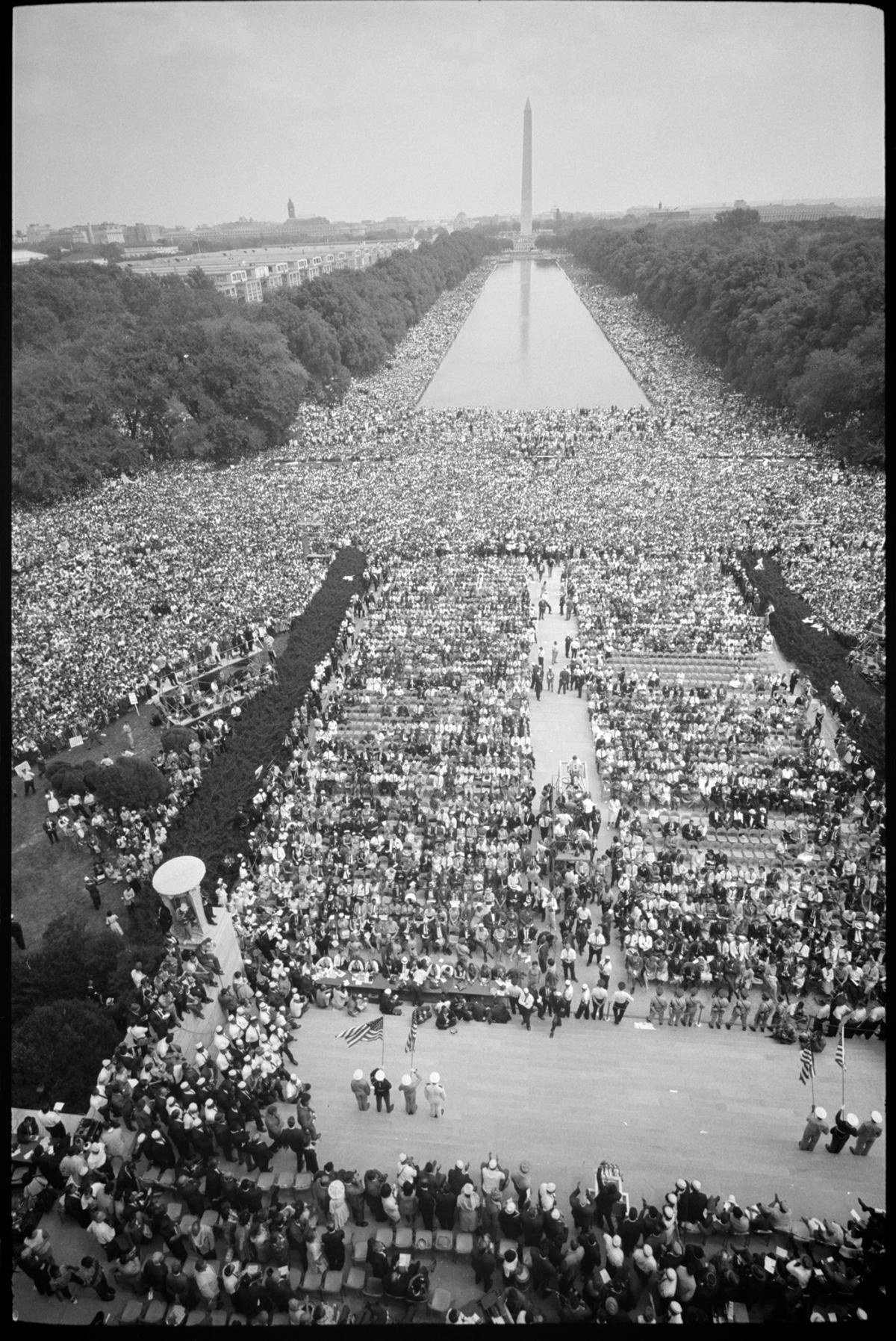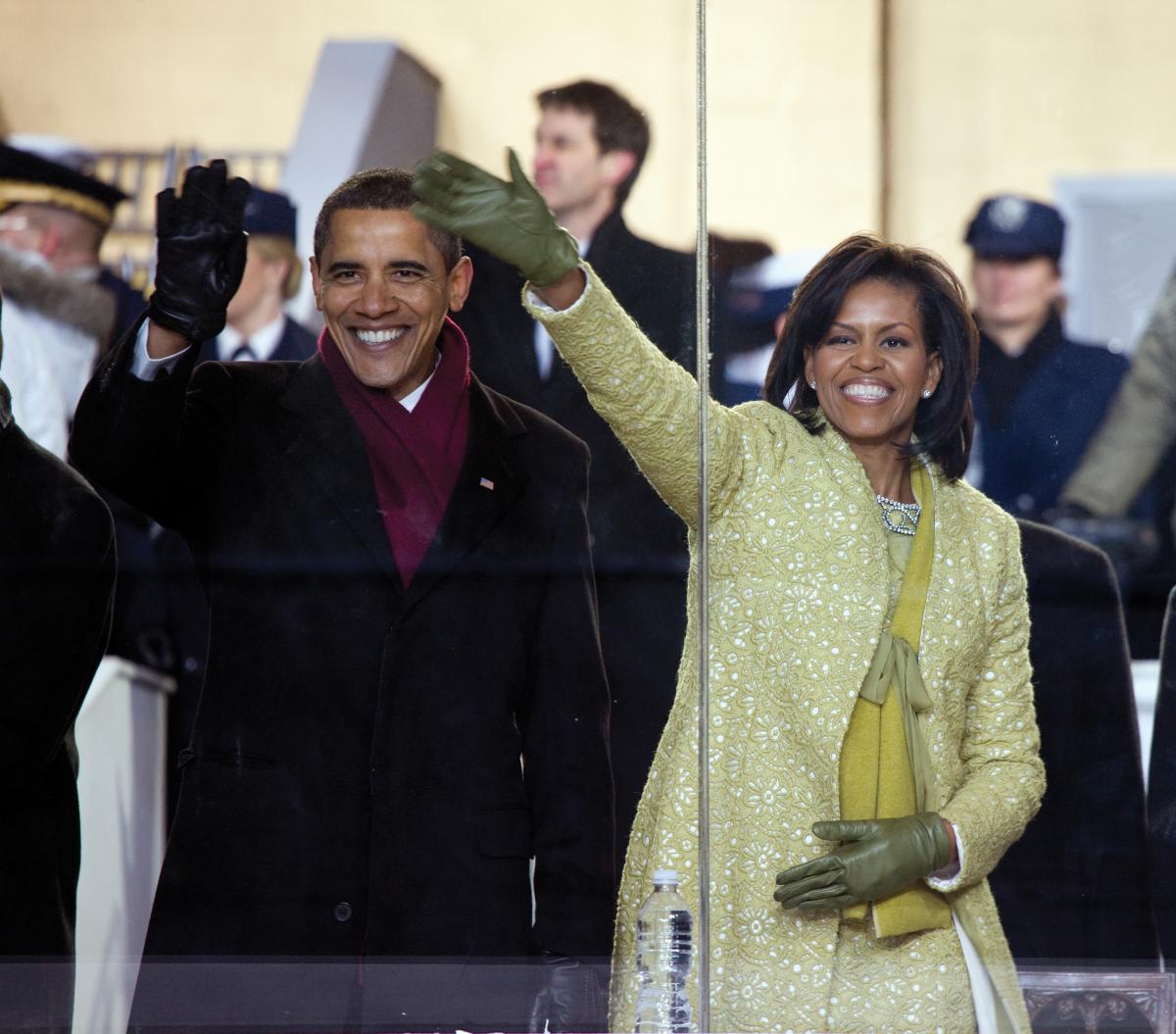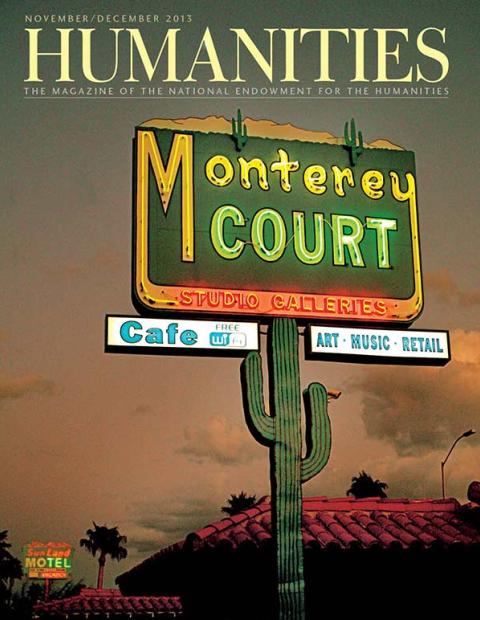How do you tell the story of a people?
Over the past decade or so, productions on the American experience of various ethnic and racial groups have appeared on public television. These groups have included Irish Americans, Jewish Americans, Italian Americans, Chinese Americans, and most recently Latino Americans. It therefore seems logical that the six-part series The African Americans: Many Rivers to Cross, presented by Henry Louis Gates Jr., the Alphonse Fletcher University Professor at Harvard University, is next in the queue.
Gates describes his new series as a chronicle of “the African American people.” This choice in phrasing is striking. As one of the nation’s foremost experts in the literary history of peoples of African descent in the Americas, Gates is well aware of the long-standing effort on the part of black scholars, from George Washington Williams to John Hope Franklin to Nell Irvin Painter, to understand what it means to be African American. Indeed, the question “Who are we?” has been one of the most haunting in the black experience, one fraught with both sorrow and hope.
Perhaps no other individual grappled with this question with greater passion, courage, and intellectual fecundity than W.E.B. Du Bois. Du Bois is recognized as one of the nation’s greatest intellectuals and father of the modern civil rights movement. In a life that began during the impeachment of Andrew Johnson in 1868 and ended on the eve of the March on Washington in 1963, Du Bois worked tirelessly, using every creative tool at his disposal, to inject the history of peoples of African descent with truth, humanity, and beauty.
Central to Du Bois’s conceptualization of African Americans, or in the parlance of his day “the Negro,” was the idea of “the folk.” The word appears not only in the title of his most well-known book, The Souls of Black Folk (1903), but in some of his other less known historical texts, such as The Gift of Black Folk (1924) and Black Folk Then and Now (1939).
Du Bois’s understanding of the Negro “folk” is often reduced to culture. But Du Bois, who studied at the University of Berlin and had a lifelong affinity for German intellectualism, also conceived of black folk in terms of race and nation as well. His many writings on this theme, some contradictory, reveal a struggle to find equilibrium between the “unifying ideal of Race” and the Negro as a fundamentally American type. He expressed this quandary most eloquently and famously in The Souls of Black Folk, describing the “peculiar sensation” of “double consciousness” as a state of hyphenation between being a Negro and an American that, while individually and collectively painful, also held infinite potential.
“The history of the American Negro is the history of this strife,” Du Bois wrote. He viewed group struggle—“striving”—as the driving force of history. As a people, Negroes at the turn of the century were engaged in a continued struggle to merge the “two unreconciled strivings” of their identities as Americans and as peoples of African descent into “a better and truer self”—African Americans. It was this striving, more than anything else, that constituted the central thread of the black experience.
In 1903, when Du Bois published The Souls of Black Folk, the Negro people—banished to the realm of second-class citizenry after the premature end of Reconstruction—had yet to achieve their full potential and demonstrate their greatness as a people to the world. This was by no fault of their own. The burdens of history, the systematic shuttering of the doors of opportunity, and the pervasive denial of black people’s fundamental humanity all colluded to stymie the latent genius of African Americans and deny recognition of their contributions. Yet they did not abandon their striving. They continued to struggle, in slavery and in freedom, for their rightful place in the nation, all the while forging a remarkable history that over the course of nearly five centuries would affirm their designation as a distinct people.
Building on the foundation laid by Du Bois, Gates has embraced the role and responsibility of chronicler of the black experience. He is no stranger to the medium of television, having written, hosted, or produced over a dozen series and documentaries about various aspects of the global black experience. One gets the sense that The African Americans represents a culmination of his previous efforts, an attempt to weave the disparate threads of the black past into a cohesive tapestry, brought to life through film.
The structure of this six-episode, six-hour series is itself unique. In chronicling the history of a people, scholars traditionally identify watershed moments to provide narrative structure. These moments are most often major events—wars, depressions, elections—that have been central to the evolution of the United States as a nation. The African Americans compels us to consider the experiences of black people as shaped by the larger currents of the nation, but not necessarily defined by them. As narrated by Gates, we witness African Americans making their own history and, in the process, making the history of the country.
Adopting the title of Paul Gilroy’s landmark text, episode one is titled “The Black Atlantic.” Shifting our traditional chronological starting point, Gates opens by revealing how the black presence in North America began with African-descended people who traveled with the Spanish conquistadors through Florida and the Southwest in the early sixteenth century. Nevertheless, the modern black Atlantic and ultimately the African-American people emerged out of the transatlantic slave trade. Traveling to Africa, Gates confronts the historical and moral complexities of African participation in the transatlantic slave trade, demonstrating how West African societies were irrevocably transformed by a horrific commerce that resulted in some twelve million men, women, and children being forcibly dispersed from their homelands and shipped to various parts of the Atlantic world.
The colonial backwater of Jamestown, Virginia, was one of these destinations, and in August 1619, the twenty Africans who arrived on a Dutch man-of-war would mark the charter generation of the African-American people. Slavery would evolve from one of several forms of labor in the nascent British colonies to a system of racialized bondage that cast peoples of African descent as outside the bounds of freedom and even humanity.
But the efforts of white masters to deprive enslaved Africans of their humanity and strip them of their culture was never successful. In the midst of this terrible transformation, a distinct people emerged, a people with strong cultural connections to Africa but also with ideals informed by those of an emerging American nation. The place of African Americans in the Revolutionary War highlighted this reality, as black people searched for freedom wherever they could find it, whether in the Continental Army or with the British. At the war’s conclusion, it was African Americans who stood as the purest embodiments of the new nation’s revolutionary promise.
Episode two is titled “The Age of Slavery.” In the wake of the American Revolution, the freedom dreams of most black people were dashed by the nightmare of “King Cotton” and a plantation system that enriched the world while entrenching slavery throughout the entire Lower South. The domestic slave trade became a second middle passage, separating families, shattering communities, and instilling a perpetual fear of the unknown in the lives of enslaved African Americans.
However, the central theme of this story is not suffering, but resistance and survival. As Gates demonstrates, opposition to the dehumanizing brutality of slavery took many forms. Black people like Richard Allen resisted through Christianity and religious institutions such as the African Methodist Episcopal Church. Black people like Frederick Douglass resisted by escaping from slavery and using their voice to spark a growing abolitionist movement. Black people like Nat Turner resisted by engaging in violent rebellion, striking terror into the hearts of white slaveholders. Black people like Margaret Garner resisted by killing their children lest they be trapped in a life of servitude, an unimaginable act that Gates renders imaginable by taking us inside the lives of the enslaved.
Episode three, “Into the Fire,” begins with the Civil War and ends with the birth of the Jim Crow era. African Americans understood the Civil War, from its onset, to be about the future of slavery. Slaves made use of every opportunity afforded by the war to seize freedom and transform the conflict from one about the preservation of the Union to the permanent destruction of slavery as an institution. Freedom was not something bestowed upon enslaved black people by a benevolent president, but something they made possible by swelling the Union lines and taking up arms as soldiers. Reconstruction offered the opportunity for freed men and women to stake claim to their hard-fought citizenship and exert themselves in the public sphere. The sight of black men walking the halls of Congress spoke to the revolutionary potential of Reconstruction and the promise of interracial democracy.
It was not to be. Reconstruction came to an abrupt end through a combination of unabashed violence and political chicanery. Throughout the South, countless freed people tragically found themselves thrust back into a second slavery. However, in the face of a rising tide of white supremacy and life-or-death choices, African Americans continued to struggle, survive, and, in many cases, prosper. Black people, through schools like Hampton Institute or all-black towns like Mound Bayou, found ways to navigate the treacherous waters of post-Reconstruction America and lay the groundwork for a subsequent generation of African Americans to continue striving for freedom.
One of the most impressive qualities of The African Americans is the interplay between the past and the present. While Gates is very much at the center of the series, his voice and presence do not dominate the story. It is the places to which Gates takes us that make this visual journey through time remarkable.
We travel down the same South Carolina path where an army of enslaved Africans near Stono Creek rebelled against their masters and marched toward Florida in hopes of freedom. We stand at the Forks of the Road intersection in Natchez, Mississippi, where the nation’s second largest slave market once operated. We see Charleston Harbor as Robert Smalls may have seen it when he boldly commandeered The Planter and steered it past five Confederate forts and into the hands of the Union navy. At each stop, Gates is accompanied by renowned scholars, local historians, and community leaders who illuminate the significance of these various sites of memory. The African Americans reminds us how the struggles of black people are embedded in the very geography of the country and soaked into its soil.
In chapter one of The Souls of Black Folk, Du Bois mused on the ultimate aim of the Negro’s striving. It was, he wrote, “to be a co-worker in the kingdom of culture, to escape both death and isolation, to husband and use his best powers and his latent genius.” African Americans have made tremendous strides toward achieving these aims and making the United States true to its democratic promise. It is perhaps no coincidence that this series appears during the presidency of Barack Obama, the first African American to occupy the White House.
Yet the history of struggle that Du Bois articlated in 1903, and that Gates powerfully and vividly presents a century later in 2013, has by no means come to a conclusion. The history of the African-American people continues to evolve. More stories remain to be told.
More rivers remain to be crossed.







